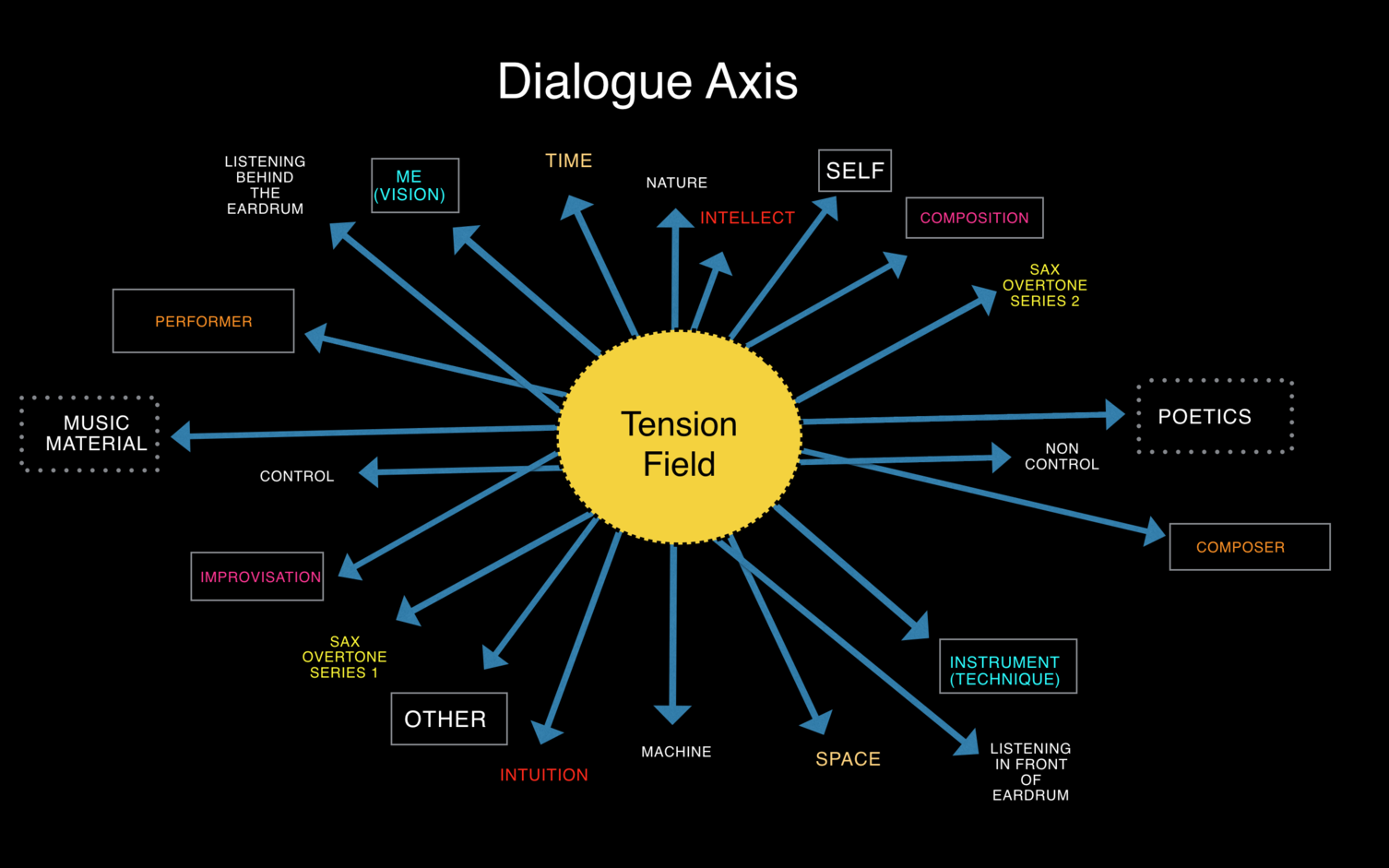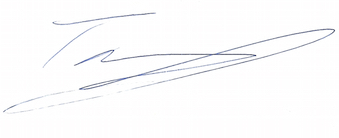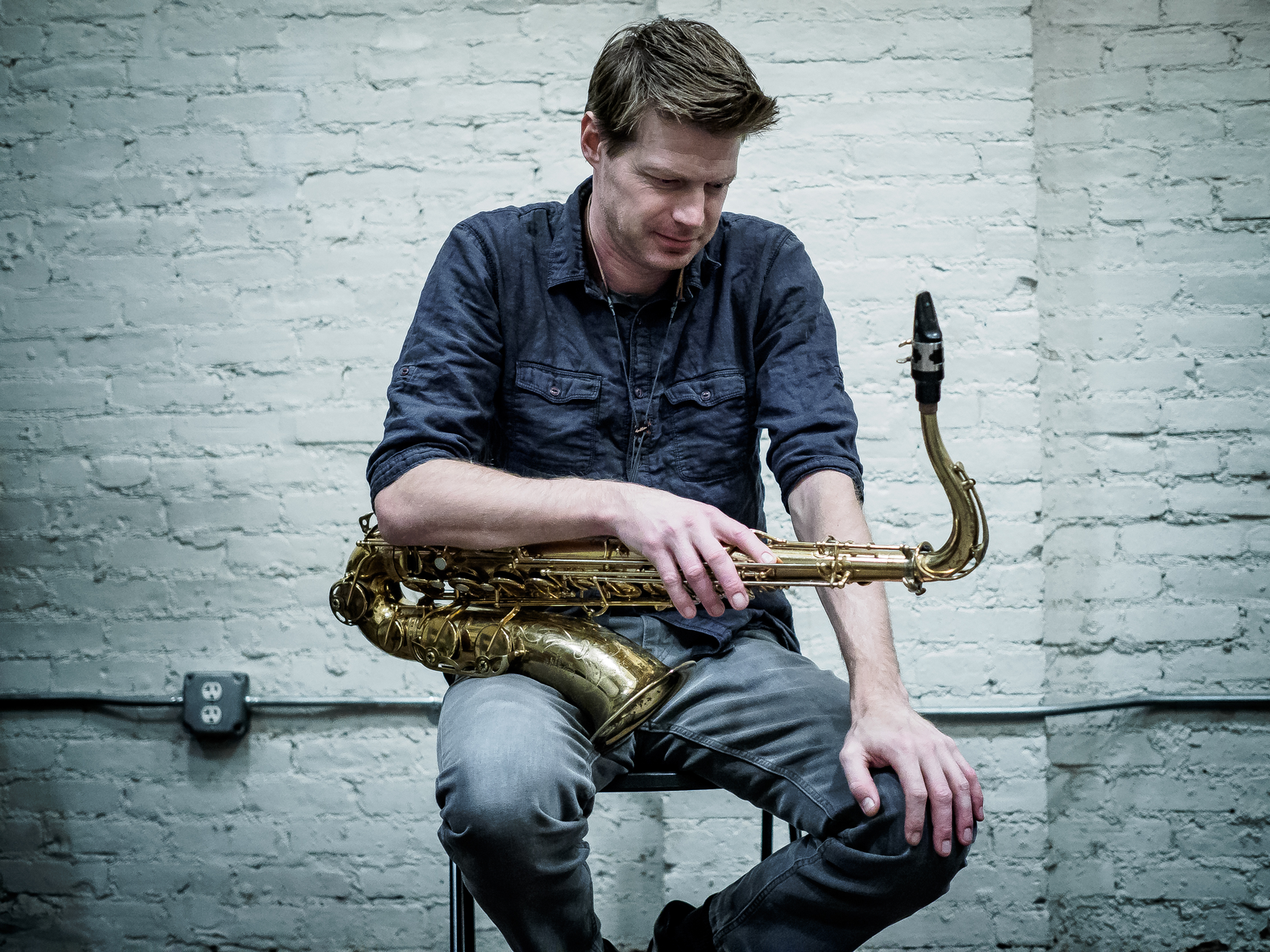Introduction 1. Entering the Landscape 2. Exploring the Territory 3. The Reed Trumpet 4. Influences 5. Solo 6. Trilogy 7. Epilogue 8. Appendix
__________________________________________________________________________________________________________________________________________________________________________________________________________
I have tried to use the tension field arising from this dialogue axis to zoom in on the most important concerns in the project and furthermore use them as starting points for my reflections and artistic choices. It is clear to me that there are too many implications to elaborate fully on here, and that my project reflections can only grasp part of them. Furthermore, there are of course many other polarities to be discovered and survey, consequently many more questions to be answered.
However, I believe they put forward something that can inspire my thinking and artistic practice way beyond the scope of this project and therefore also belong to the afterlife of the project, the future of the multiphonics, and also this closing text.
The project has been a lonely journey; from the first insecurities of what artistic research really is about, to finding a confident standing in it and being able to grow artistically, as well as to trigger and expand my perspectives on art in general. The creative process, the practice, the performances and the recordings have all been done mostly in a solitary sphere. It felt like it just had to, after coming to terms with working out of a dogma for the project. In the future, however, I look forward to increasingly making use of multiphonics in ensemble settings, and I plan to compose music that will make space for these sonorities to breathe alongside other instruments. Furthermore, I believe it is time for me to explore some new music projects that will deal with combining acoustic sonics and electronics, without losing the intimacy and speediness in the interaction between the performers and between the acoustic and electronic instruments in use.
In a musical culture more and more absorbed by the overwhelming opportunities of new technology, hectic impersonal virtual communication, and unsocial consumer focus, I believe projects like mine represents a contribution to emphasize the values of embodied knowledge. Something I also elaborated on in the conclusive part of my introduction to this reflection. This embodied knowledge is to be understood as a multilayered mind–body continuum of corporality, affectivity, cognition and spirituality whose layers are subtly interwoven and mutually interactive. From this, intimacy with everything that surrounds us arises and offers a valuable experience of being human.
I don’t know what reality is; we each have our experience of taking in the world and our place in the world through sound.
I do however know that once you sign on to spend your life with a musical instrument, you have something very consistent in your life, almost like a meditation practice. More importantly, you also have something that enables to interact emphatically with everything surrounding you.
7. Epilogue
"Living is a form of not being sure, not knowing what next or how. The moment you know how, you begin to die a little. The artist never entirely knows. We guess. We may be wrong, but we take leap after leap in the dark.” (Agnes DeMille)
Naturally, being so deeply involved in a research project over a period of three years, there are many subjects I wanted to unpack the implications of. I decided to focus on some of ‘the leaps in the dark’ as Agnes DeMille articulate it. Perhaps, even, now and then turning on the light, so to speak.
I wanted to write about what has been the most significant leaps and concerns to me, without totally detaching from the context I’m operating in. Evidently, I have kept the project as close to myself as possible, which I moreover believe is a privilege one has in an artistic research project and in the writing of an artist’s text.
Nonetheless, the project is ideally a valuable contribution to the ‘multiphonic future’ of the acoustic saxophone. With the rigorous approach of only allowing multiphonics to be the raw material of the music produced, I believe I have created poetic multiphonic landscapes, which, to me, are unmistakably personal. In the process, I hopefully have been able to take the sonics to places they might not have been before.
The project has given me an insight into the possibilities of sonic manipulation, as well as working with an awareness of the sonics’ intrinsic qualities. An impulse to go beyond the notion of being just someone that was unwilling to accept the constraints that conventional practice might impose upon his or her instrument. Ideally, the project will serve as an inspiration both for the improvising and the non-improvising saxophonist as well as other wind players. Particularly on the use of multiphonics, but also for the use of unconventional techniques in general as well as for showing a method that is both concerned about the instrumental technical details and the broader context of music as art. Furthermore, a discourse on multiphonics is offered the non-performer composer and might open up for a nuanced understanding of the singularity and complexity of this material.
I have stated that my, initially unintended, work with the reed trumpet is paradoxically and probably the most inventive part of the project. My exploration and development of it, and in the process recording a full-length album, is something sonically new and furthermore belongs to a largely untapped area. Further development, both from others and myself, will be exciting to monitor.
It should be clear which context I have been working in and that I’m not alone being captivated by saxophone multiphonics. Given the highly complex quality of the saxophone multiphonics, these sonics are far from exhausted, and it will take a lifetime to explore them in full depth – probably several lifetimes. Nevertheless, the closest peers in this project (from the pioneering work of Evan Parker to John Butcher, Ned Rothenberg, Christine Abdelnour, Colin Stetson and Mats Gustafsson) have all explored the multiphonic landscape with an unmistakable personal approach. I have tried to work my way into creating my own musical vocabulary through some of the gaps left by my peers in the field, as well as making use of (and possible personalize) techniques and approaches they have, in some cases, initiated.
In this process, I believe my background in contemporary classical music might have made it possible for my music to take on another aesthetic than the ‘prevailing’ jazz/free improvisation aesthetic. At times a different construction attitude to the material, a subtle focus on the softer dynamics, and use textures with a slightly different timbral surface. Making the decision to put a lot of efforts on my archive box also contributed to a detailed personal focus on the multiphonic possibilities. It gave me both a close look at what the instrument ‘hides’ of secrets and possibilities, and opened up new paths far away from it (e.g. underwater soundscapes). Nevertheless, how others perceive all of this is naturally not up to me to assume, I can only give an insight into my artistic thinking and intentions through this reflection text and more importantly through my three solo albums.
I will not claim that ‘The Poetics of a Multiphonic Landscape’ reveals any entirely new unimagined strategies or techniques. Nor can the result of my research be seen as particularly easy to apply for others. But, what I believe a project such as mine can hardly avoid doing is breaking some new ground for the multiphonic as a means of expression – and I have wanted to be one voice in this discussion.
Have I come closer to the poetics of multiphonics? Surely, I can only answer for myself. I believe that working with the eight fundamental criteria (dogma), and in the process being very clear about maintaining a focused and reflected artistic practice during my research, I have arrived at some music that feels inspired and is close to what I initially had hoped and imagined to reach. I, at least, felt that a poetic light was enabled to shine upon the music. There are many multiphonic possibilities I haven't explored yet, and only part of my multiphonic findings have been truly embodied and integrated into my performances. Fortunately, I have them waiting in a ‘personal library’ to inspire me further in the years to come.
Something I haven’t specifically revealed during the reflection text is how I came to think of the project as something that involved a series of dialogical relationship between two polarities and in that way created an inspiring ‘tension field’:
Introduction 1. Entering the Landscape 2. Exploring the Territory 3. The Reed Trumpet 4. Influences 5. Solo 6. Trilogy 7. Epilogue 8. Appendix
__________________________________________________________________________________________________________________________________________________________________________________________________________


